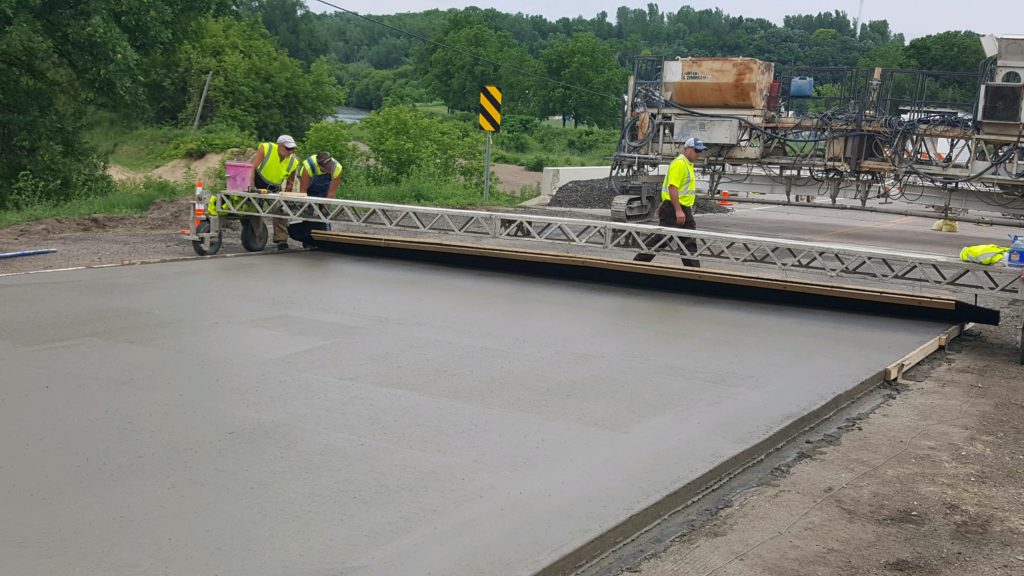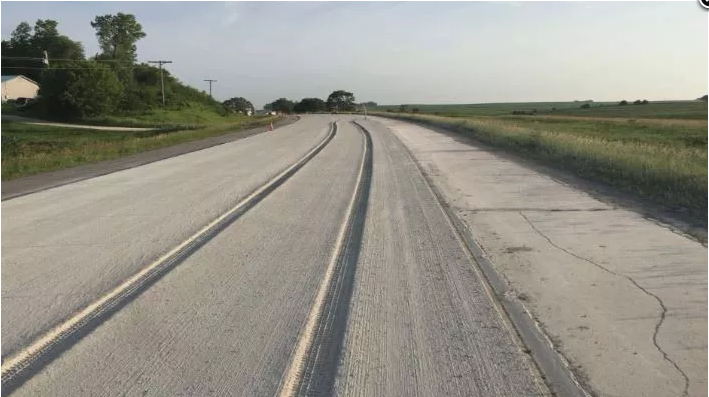The Rise of Fiber-Reinforced Concrete Overlays

The Situation
Drivers are well aware of the declining condition of the streets, highways, parking lots, and pavements in the United States. Taxpayers are also painfully aware of the limited transportation funds available to correct these deteriorated pavements. Totally new pavements are usually not possible or affordable in today’s transportation climate. Therefore, rehabilitation of existing pavements becomes paramount. There is a growing need for a durable and cost-effective remedy to the wide variety of pavement applications, with concrete becoming a viable and affordable option for both government and private owners.
Past
While concrete has always had a solid reputation for durability and longevity, it has often struggled to offer a reasonable alternative to less expensive and quicker methods, such as Hot Mixed Asphalt (HMA) toppings. With fluctuations in world oil prices along with advancements in concrete technology, concrete has enjoyed new opportunities to gain considerable market share and usage for pavement repair nationwide. But to compete effectively, concrete must not only be cost-comparable to asphalt options, but also match the topping thicknesses and time-to-reopening conditions that have favored asphalt in the past. By meeting those requirements, concrete becomes the most durable and sustainable choice for pavement repair. Additionally, the ability to replace traditional steel reinforcements with fiber reinforcements will not only meet but exceed those requirements.
Present
It has become clear that concrete overlays on existing asphalt or concrete pavements could be cost-effective and add relatively maintenance-free life to those pavements for a very long time. The obvious benefits provided by three-dimensional synthetic fibers regarding shrinkage crack reduction and additional concrete toughness play well against the demands and issues of current concrete overlay technology and practice. Given the right fiber, this might also permit even thinner cross-sections and fewer troublesome joints.
Future
One of the growing targets for fiber-reinforced concrete overlays has become township and county highways. Here local government officials and design engineers with limited repair budgets are most desirous of the added durability and pavement life courtesy of the macro fiber reinforcement.
FORTA-FERRO® macro synthetic fiber was recently used on the first fiber-reinforced concrete (FRC) overlay in the State of Minnesota for the Highway 63 rehabilitation. The 5” thick overlay covered 12 1/2 miles of state highway over severely deteriorated asphalt at a dosage of 4.0 lb/cu yd. This project presented its own unique set of challenges including a forced control-joint activation process approved by MnDOT within 10-12 hours of placement by a 58,000 lb. fully loaded water truck. More interestingly, this project also came equipped with a premature errant drive-through over a ¼ mile stretch of less than 2-hour old pavement. Ultimately teamwork, engineering, and a renowned knowledge base guided this project to receive the American Concrete Pavement Associations (ACPA) Silver Award in the Highway Overlay category during the 2019 “Excellence in Concrete Pavement” awards.

There are many new areas of potential fiber contribution that are capable of dramatically changing the design and execution of concrete overlays moving forward. Recent trials and test sections are prepared to offer even more real-world evidence and the future of fiber-reinforced concrete overlays is limitless.
Our Commitment
FORTA has spent decades perfecting synthetic materials with unique designs and shapes. The shape and collation of FORTA-FERRO allows the introduction of a much higher quantity of longer length fibers into the concrete. This fiber is non-corrosive, non-conductive, safe and easy to use, and faster to install. FORTA-FERRO offers maximum long-term durability, structural enhancements, and effective secondary/temperature crack control by incorporating a truly unique design system.
Since 1978, the products, services and people of FORTA have played an important role in the design, construction, and preservation of Stronger Lasting™ roads, bridges and buildings around the globe. Through an ongoing commitment to research and development, FORTA will continue to envision and construct the future of reinforcement fibers.
